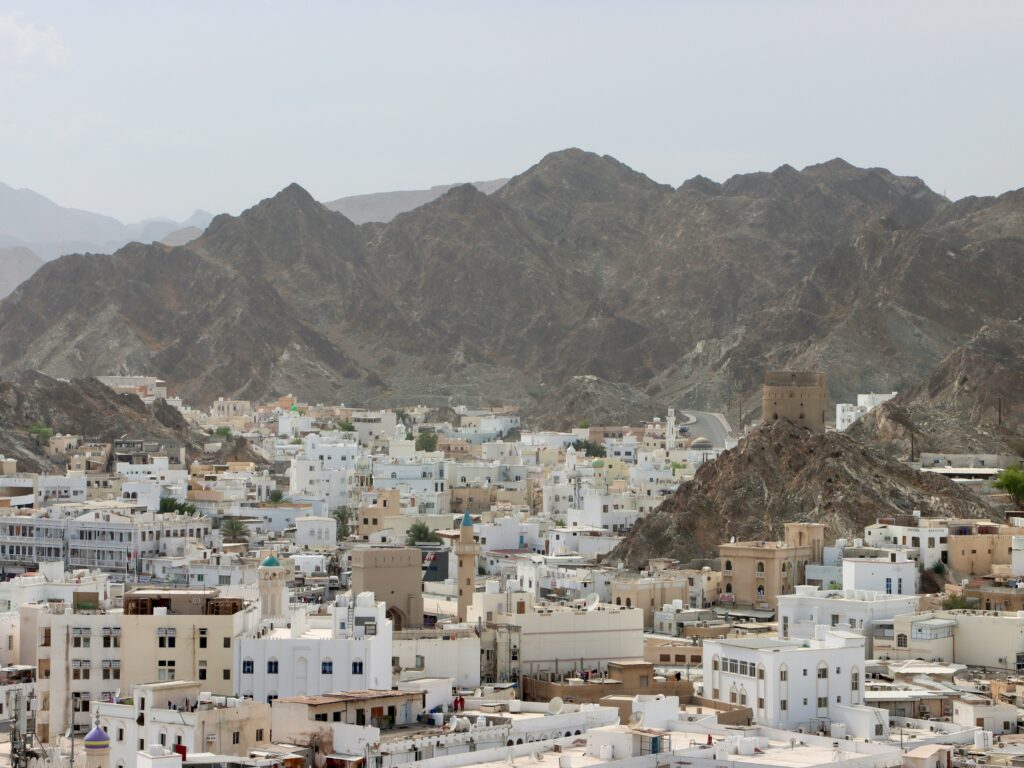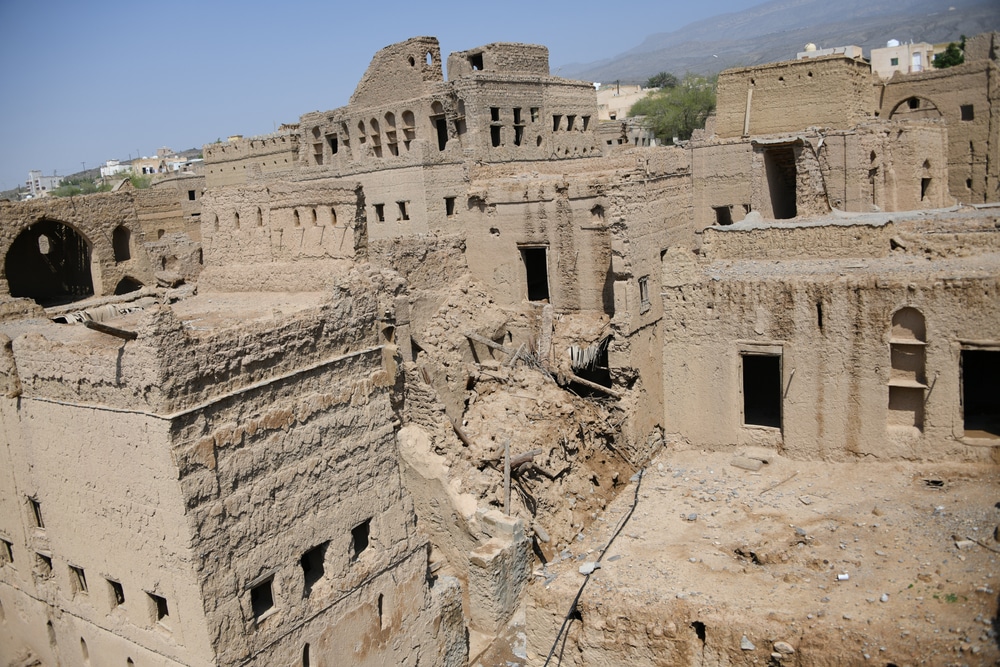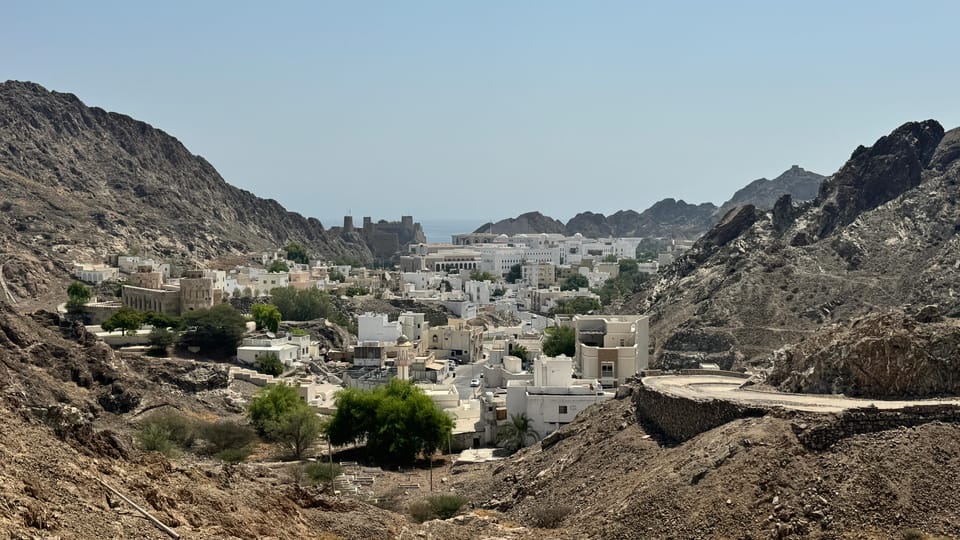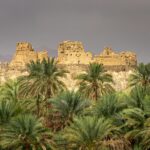
At the southeastern tip of the Arabian Peninsula, the Sultanate of Oman captivates history and archaeology lovers with its wealth of ancient sites. Oman is a treasure trove of archaeological wonders, with ten breathtaking sites that reveal its rich past.
Unlike the glitz of its neighboring countries, Oman stands out with a subtle, timeless charm. Known for its peaceful landscapes and ancient heritage, this country feels like a storybook come to life. Amid orange dunes and elegantly designed cities, Oman reveals stunning archaeological sites that are a paradise for enthusiasts of ancient ruins and architecture.
For those seeking to explore Oman’s historical gems, here are 10 must-visit archaeological sites in Oman that capture the essence of its storied past.
Table of Contents
In the heart of the cities
1. Al Baleed Archaeological Park

| Condition: ★★★ Public awareness: ★★★ Historical influence: ★★★ |
- This archaeological site near Salalah, which includes several places and buildings, is a UNESCO World Heritage Site.
- It owes its reputation in particular to its famous incense trading port and the remains of its ancient city, Zafar.
- During your visit to Al Baleed, you will also have the opportunity to admire the Grand Mosque, the fort, the defensive wall, the amazing lagoon, and the incense museum.
2. Sumhuram

| Condition: ★★★ Public awareness: ★★★★ Historical influence: ★★★★ |
- Sumhuram, is another archaeological site in Oman near Salalah.
- This ancient fortified town and its iconic port are full of history and traces of civilizations.
- The excavations of Khor Rori have revealed many architectural treasures: ramparts, excavated rooms, a small temple, and a quantity of iron and bronze objects.
- Built on a royal order and then colonized, this city was for a long time the nerve center of the incense trade.
- In ancient times, it also owes its success to its position on the dike, where a wadi provided fresh water to the inhabitants.
3. The city of Al-Hamra

| Conservation status: ★★ Public awareness: ★★ Historical influence: ★★ |
- Al Hamra, at the foot of the highest mountain in the Sultanate of Oman, is home to an old abandoned town full of charm.
- Its deserted streets are lined with mud houses that are gradually falling into oblivion. However, there are still some treasures to be found there, including extremely ornate wooden doors.
- Al Hamra also has a lively center and homes in good condition. Look up at their ceilings. They are generally supported by palm tree frames. An idea as unique, and ingenious as it is photogenic!
- Finally, the city sits in a large natural space, the cradle of Omani eco-tourism. Here, vast green spaces and tropical trees rub shoulders with the desert. A desert of glowing and depopulated dunes, dotted with a few steep djebels.
4. The city of Nizwa

| Condition: ★★★★ Public awareness: ★★★★ Historical influence: ★★★★ |
- Nizwa is more than just a city; it’s the heart of Omani tourism, beloved by locals and visitors alike.
- This stunning fortress, built in the late 17th century, is the most visited in Oman, and for good reason—its charm is truly unmatched.
- You can easily spend hours exploring it, especially its lively souk, a vibrant place filled with sensory delights.
- Nizwa boasts a remarkable castle and an impressive falaj among its historical sites. This ingenious underground water system, used to irrigate fields, is a testament to the ingenuity of Omani engineering and is still in use today.
From Cities to Forts
Architecture in the form of fortifications is very present in Oman. It is characterized in particular by ramparts, impenetrable buildings, and large forts. Among the archaeological sites of Oman, one cannot do without a few forts.
5. Bahla Fort

| Condition: ★★★★ Public awareness: ★★★★ Historical influence: ★★★★ |
- First of all, there is the exemplary fort of Bahla.
- Bahla medieval citadel stands out for its imposing size and its rounded towers made of raw bricks and stone bases.
- Its ramparts, erected in the middle of the desert, enclose a labyrinth of dwellings, underground canals, and the beautiful Mosque.
6. Jalali Fort

| Condition: ★★★★ Public awareness: ★★ Historical influence: ★★★ |
- Oman’s architectural and historical wealth has been mixed with Portuguese military architecture since the 1600s. The latter is reflected in the use of ballistic technology and the construction of round towers in place of angular ones.
- The Jalali Fort, which overlooks Muscat Bay and was intended to protect the waterways, is one of the first defensive buildings designed during the Portuguese occupation.
- Climb its flight of bumpy steps. From its rocky promontory, the fort enjoys exceptional panoramic views of the Gulf, Muscat’s old town, and its bustling port.
7. Jabrin Fort

| Condition: ★★★★ Public awareness: ★★★ Historical influence: ★★★ |
- The Jabrin fortress served for a long time as a residential palace for Imam Bilarab before being converted into a fort crowned with ramparts.
- This jewel of local architecture, modestly furnished, is nonetheless magnificent. Indeed, the decorators and sculptors have created masterpieces of incredible finesse here.
- The ceilings are richly decorated.
- Poetic motifs and arabesques cover the walls.
- The woodwork is meticulously carved.
- Outside, the colorful walls emphasize the wealth of the former occupants.
- The thick defensive doors shine with their gigantic fan design.
Graves and fossils
8. Bat, Al-Khutm and Al-Ay

| Condition: ★★★★ Public awareness: ★★★★ Historical influence: ★★★★ |
- The most famous archaeological sites in Oman are undoubtedly those of Bat, Al-Khutm and Al-Ay.
- This complex occupies part of the village of Bat and brings together an incredible set of monuments, towers, necropolises, and rural dwellings. All are in a breathtaking state of preservation.
- It is difficult to remain indifferent to the remains that are 4,000 to 5,000 years old and have so well resisted the passage of time, the work of erosion, and the sweep of bad weather.
- The highlight of the visit is the discovery of the seven colossal towers, rising from the ground in a crown, in the heart of the city.
- Bat, Al-Khutm, and Al-Ay also shine with their honeycomb tombs. More than a hundred round, stone-built tombs have been built here: mind-blowing!
- They are erected in imposing towers several meters in circumference, aligned like soldiers and pierced by triangular entrance doors.
9. Jebel al Harim

| Condition: ★★★ Public awareness: ★★ Historical influence: ★★ |
- Cross the Omani mountain villages, the meadows where the sun turns the grass blond and the perfect wheat turns the picture yellow. You finally arrive at 1,600 meters above the sea, at the top of Jebel al Harim. The panorama is sensational.
- Even more, the place contains an astonishing collection of fish and shell fossils more than 250 million years old. It gives the impression of swimming in the open fossilized sea.
- On this high flat summit, you can also admire some stone engravings and ancient petroglyphs of humans and animals.
- Did you know that Jebel al Harim Mountain, overlooking the Musandam Peninsula, is also called “Women’s Mountain“? A name derived from the time when women took refuge in the caves dug into its slopes when the men went out for long days hunting or fishing.
10. Bawshar Tombs

| Conservation status: ★★ Public awareness: ★★ Historical influence: ★★ |
- The old village of Bawshar has managed to preserve some beautiful residences and a proud-looking fort.
- Its tombs are a highlight that stands out for their circular shape, crowned with stones and buried under the rocks.
- These overlap and divide, stretching over twenty meters in total. These burial places with their unique architecture are nicknamed “honeycombs”. Unique constructions in the Arab world.



![5 Best Cheap Hotels In Muscat [2024] 3 Cheap Hotels In Muscat](https://artandthensome.com/wp-content/uploads/2023/07/Muscat-Oman-1289284359-150x150.jpg)
![10 Best Hotels In Muscat By The Sea [2024] 4 Best Hotels In Muscat](https://artandthensome.com/wp-content/uploads/2023/07/273552364-150x150.jpg)
![What To See In Oman: 8 Most Beautiful Natural Sites [2024] 5 What To See In Oman](https://artandthensome.com/wp-content/uploads/2023/03/pexels-sheikh-haris-11485612-150x150.jpg)